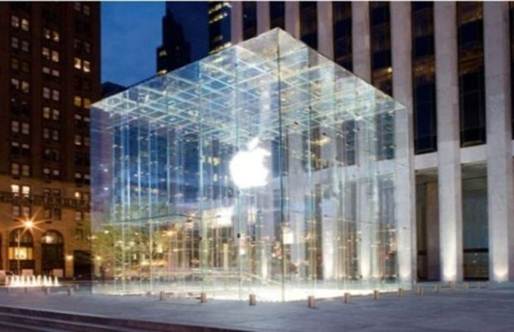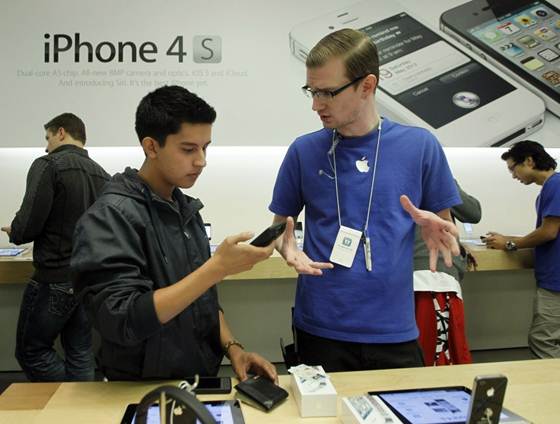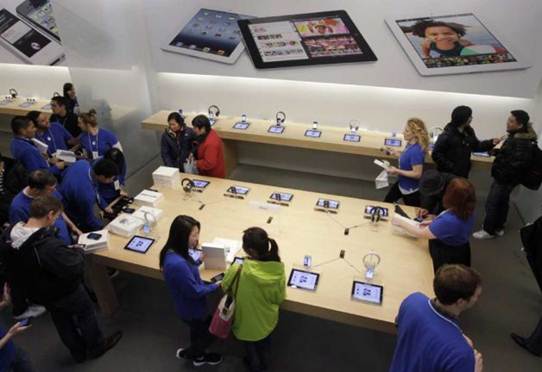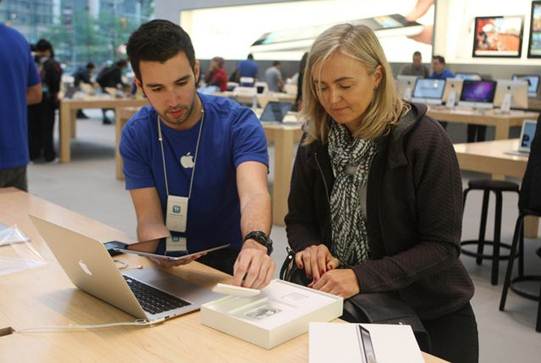Former Apple Store Specialist and trainer
SERENITY CALDWELL gives her tips on making the most of the landmark retail
outlets.

Apple
Store in Australia
You don’t normally associate the phrases
“work of art” and “place of learning” with a simple retail outlet; and most
retail stores don’t enjoy lines that stretch down the block. But Apple’s stores
aren’t your average shops.
What began in 2001 as an experiment – one
that many industry experts derided at the time – has become a retail
revolution. Consumers love Apple’s stores for their clean, modern design, their
extensive selection and their Geniuses. Other companies envy them and sometimes
try to copy them.
Whether you’re an Apple Store regular or a
newbie, there are probably things in it you don’t know about. So take a deeper
look past those glass doors to find out how you can make the most of the Apple
retail experience.
Peek, play, buy

The
goal of the first Apple Store was just that: to lure customers in by letting them
play with Macs
How do you prove to a market dominated by
Windows machines that Apple’s hardware and software is superior? You show it
off.
The goal of the first Apple Store was just
that: to lure customers in by letting them play with Macs. Apple converts could
play with the latest hardware and potential switchers could ask questions, try
out programs and surf the web, all without using a credit card.
Today, the store’s mission remains
unchanged. When you walk into one, you are greeted with the full range of Apple
hardware: iMacs, MacBook Pros, Mac Pros, iPads, iPhones, iPods and more. Even
the signs are Apple-centric.
The signboard for each product on display
consists of an iPad running an app that detail everything you might want to
know about that particular device. There’s even an onscreen button to call a
Specialist over if you have questions.
The Specialists are the blue-shirted
stalwarts of the Apple Store. They are sometimes accused of being too helpful –
upon entering a store, it’s unusual if you aren’t greeted by at least two of
them – but they’re not the typical hard-sell types. They don’t earn commission
from a sale and their enthusiasm seems genuinely directed at helping customers
in need.
Learning and training
The front half of the store (or, in bigger
locations, the main floor) is where most playing and buying happens. Enter the
rear section (or another floor), however, and you cross from the retail area to
a hybrid classroom and technician’s workshop.

Customers
talk with Apple employees
Here, the company provides several services
to customers. Every one of these services – except for One to One memberships
and Joint Venture – is free for anyone, even if you don’t have an Apple device;
for certain customer workshops, you can attend without bringing any hardware at
all.
Personal setup.
If this is your first computer or iOS
device, Apple’s Personal Setup service is invaluable, but even Mac and iPhone
veterans can take advantage of it.

A
Specialist will help you unbox your purchase and turn it on
A Specialist will help you unbox your
purchase and turn it on (and, in the case of an iOS device, activate it). If
you’re bought a Mac, Specialists will help you load any software you’ve
purchased along with it, introduce you to the Mac App Store and explain how to
transfer data (if you need to move information from an old computer).
If it’s an iPad or iPhone, they’ll tailor a
primer for you based on your own knowledge. Don’t know the first thing about
swipes versus flicks? Count on a Specialist to break it down.
One to One training.
Though not as well publicized as some of
the other offerings, One to One tutoring may be the most valuable. A set of
specially trained employees are on hand to provide you with solo teaching on
subjects as simple as the Finder or as complex as a Final Cut Pro project.

Training
is personalized and runs the gamut of Mac software
When you buy a Mac, you’ll be offered the
chance to purchase a $129, 12-month One to One membership, which provides you
with flexible learning options to get more from your Mac. One to One lets you
book 3-minute or one-hour Personal Training sessions in addition to structured
90-minute Group Training sessions and 90-minute Open Training, where you work
individually but with a trainer on hand to answer questions.
Training is personalized and runs the gamut
of Mac software.
One to One memberships aren’t currently
sold with iOS devices, nor are they sold as standalone options; you’ll need to
purchase a new Mac to qualify.
When you buy a membership, you’ll be
assigned a default store. You then book appointments for what you wish to
study; the training revolves around what you want to learn. Those customers who
can spare a few hours per week will find the personal interaction with a
trainer invaluable.
If you’re working on a group project, such
as building a scrapbook for an anniversary or a slideshow for someone’s
wedding, a One to One membership will give you access to Group Training, in
which you and several other members sit down and work with a trainer over a
90-minute period on a specific task.
Think of it as a modern-day master class.
Members work with trainers and each other to tackle pieces of their projects.